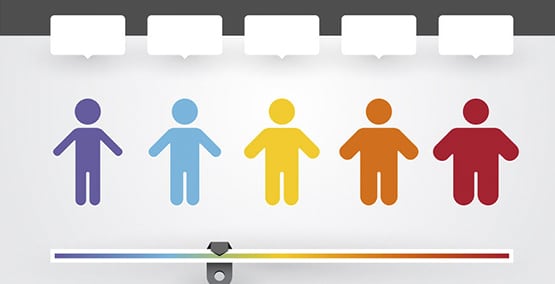
Understanding and classifying malnutrition
The Waterlow Malnutrition Classification system can help
-As pointed out, patients with malnutrition are all under-nourished , and some may be overfed as well. Several classifying systems were developed to help understand and care for these children. The problem is that they were all created to evaluate the starving child, not the one who is fed but not getting enough nutrients.
Classifying the Overfed Child
The measures don't work for the child who is becoming overweight or obese. While we can use the body mass index (BMI), which evaluates weight in relation to height for adults and children over 2 years of age, this only tells us how much they are overfed, not the degree they are undernourished. Malnutrition has to be assessed by blood work and bone density scans (a marker of the body's calcium).
The Under-Nourished Child
BMI can be used for assessing the undernourished child, but only in the early stages of malnutrition when they aren't gaining weight. However, if a child's height becomes stunted, BMI can no longer provide an accurate tool to determine the degree of malnutrition. Instead, most specialists will use the Waterlow classification system.
The Waterlow Classification
According to the Waterlow criteria, malnutrition can be separated into acute (short-term) and chronic (longer-term) malnutrition. Acute malnutrition is classified as a low weight compared to height and age. Chronic malnutrition is considered lower than average weight and height for the age.
Within the acute and chronic malnutrition categories, there are levels of severity: mild, moderate, and severe. A child who is above average or just below is considered normal. If a child falls further in terms of their weight, how far their weight is decreased determines the degree of his or her acute malnutrition. The same is true for a child with chronic malnutrition, whose height is considerably less than average.
Waterlow Malnutrition Classification System
| Degree of Malnutrition | Acute Malnutrition: % of median weight for height | Chronic Malnutrition: % of Median Height for Age |
|---|---|---|
| Normal | 90%-110% | 95% or above |
| I. Mild | 80%-89% | 90-94% |
| II. Moderate | 70%-79% | 85-89% |
| III. Severe | Below 70% | Below 85% |

Not Always Undernourished
Just because a child is below average in height or weight, does not mean he or she is malnourished. It is important to account for genetics and prematurity at birth which do play a major role in growth. Infant growth charts have to be adjusted for how premature a baby is. This is continued through early childhood. It usually takes a year to catch up in their growth for every month they are premature (so a baby who is 8 weeks or approximately 2 months early, usually will catch up to where he or she should be by 2 years of age) .
Bottom Line
Malnutrition is a diagnosis made after assessing many other clinical, biochemical and physical features. And again, it is usually the result of a child not receiving adequate nutrition over weeks to months, or where a child has increased nutritional needs due to an underlying problem.




